Showing Spotlights 473 - 480 of 2880 in category All (newest first):
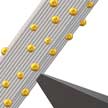 Individual single-walled carbon nanotubes (SWCNTs) have thermal conductivity that is several times higher than copper. However, once researchers start to assemble SWCNTs into macroscale composites, fibers or films, they notice that thermal conduction drops significantly. Employing in situ transmission electron microscopy, researchers visualized a colossal anisotropy of thermal conductivity of nanoscale materials. The team says that their methodology to visualize nanoscale thermal transport is not limited to carbon nanotubes.
Individual single-walled carbon nanotubes (SWCNTs) have thermal conductivity that is several times higher than copper. However, once researchers start to assemble SWCNTs into macroscale composites, fibers or films, they notice that thermal conduction drops significantly. Employing in situ transmission electron microscopy, researchers visualized a colossal anisotropy of thermal conductivity of nanoscale materials. The team says that their methodology to visualize nanoscale thermal transport is not limited to carbon nanotubes.
Apr 6th, 2021
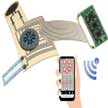 Wearable flexible sensors have recently emerged as promising alternatives for human healthcare monitoring due to their lightweight and thin-film-based nature. However, few of these flexible sensor systems are applicable to neonatal monitoring, especially sleeping posture detection. Researchers now report a versatile laser-induced-graphene-based integrated sensor system, which can wirelessly monitor sleeping postures, respiration rate, and diaper wetness with feedback alarm functions.
Wearable flexible sensors have recently emerged as promising alternatives for human healthcare monitoring due to their lightweight and thin-film-based nature. However, few of these flexible sensor systems are applicable to neonatal monitoring, especially sleeping posture detection. Researchers now report a versatile laser-induced-graphene-based integrated sensor system, which can wirelessly monitor sleeping postures, respiration rate, and diaper wetness with feedback alarm functions.
Mar 31st, 2021
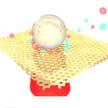 Researchers demonstrate label-free chiral detection of metabolic molecules at picomolar level through microbubble-induced rapid accumulation of biomolecules on plasmonic chiral sensors, which shows a 10-million times enhancement in sensitivity comparing to state-of-the-art plasmonic chiral sensors. The researchers achieved their ultrahigh sensitivity in chiral sensing of biomolecules by utilizing two enhancement mechanisms: the microbubble-induced accumulation of biomolecules onto the chiral plasmonic substrates; and the subsequent plasmon-enhanced chiral sensing.
Researchers demonstrate label-free chiral detection of metabolic molecules at picomolar level through microbubble-induced rapid accumulation of biomolecules on plasmonic chiral sensors, which shows a 10-million times enhancement in sensitivity comparing to state-of-the-art plasmonic chiral sensors. The researchers achieved their ultrahigh sensitivity in chiral sensing of biomolecules by utilizing two enhancement mechanisms: the microbubble-induced accumulation of biomolecules onto the chiral plasmonic substrates; and the subsequent plasmon-enhanced chiral sensing.
Mar 30th, 2021
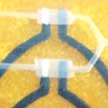 Researchers have demonstrated the large-scale fabrication of skin-interfaced printed microfluidic patches, capable of multiplexed electrochemical detection of biomarkers from human sweat. This sensor continuously and simultaneously measures the level of biomarkers such as lactate, Na+, K+, and pH during sweating. The skin-worn sensor can selectively measure analytes even in the presence of other interfering species present in sweat. The patch is integrated with a custom-made miniature printed circuit board that enables multiplexed decoding of sweat and wireless signal transduction to the host devices and is completely free from any sensor-to-sensor transfer of signals.
Researchers have demonstrated the large-scale fabrication of skin-interfaced printed microfluidic patches, capable of multiplexed electrochemical detection of biomarkers from human sweat. This sensor continuously and simultaneously measures the level of biomarkers such as lactate, Na+, K+, and pH during sweating. The skin-worn sensor can selectively measure analytes even in the presence of other interfering species present in sweat. The patch is integrated with a custom-made miniature printed circuit board that enables multiplexed decoding of sweat and wireless signal transduction to the host devices and is completely free from any sensor-to-sensor transfer of signals.
Mar 29th, 2021
 Scientists have created a new way to monitor subtle drug interactions between bacteria and antibiotics. By using a common office inkjet printer, researchers developed a disposable living laser on chip by encapsulating living bacteria inside. Strong laser emissions generated from bacteria inside the droplet will be dramatically enhanced during drug interactions. This breakthrough could enable more sensitive and high-throughput testing using micro-nano laser technology in the near future.
Scientists have created a new way to monitor subtle drug interactions between bacteria and antibiotics. By using a common office inkjet printer, researchers developed a disposable living laser on chip by encapsulating living bacteria inside. Strong laser emissions generated from bacteria inside the droplet will be dramatically enhanced during drug interactions. This breakthrough could enable more sensitive and high-throughput testing using micro-nano laser technology in the near future.
Mar 25th, 2021
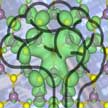 Nonvolatile resistive memory (NVRM), also called a 'memristor', is an emerging technology that offers the possibility of in-memory computation and thus holds promise to overcome the von Neumann bottleneck. NVRM is a two-terminal device but, unlike an ordinary resistor, it exhibits hysteresis in input-output characteristics and thus can be also be used as memory. A new theory suggests that such resistive switching is an intrinsic property of a vacancy-inhabited two-dimensional materials and may not depend on the physio-chemical interactions with the electrodes.
Nonvolatile resistive memory (NVRM), also called a 'memristor', is an emerging technology that offers the possibility of in-memory computation and thus holds promise to overcome the von Neumann bottleneck. NVRM is a two-terminal device but, unlike an ordinary resistor, it exhibits hysteresis in input-output characteristics and thus can be also be used as memory. A new theory suggests that such resistive switching is an intrinsic property of a vacancy-inhabited two-dimensional materials and may not depend on the physio-chemical interactions with the electrodes.
Mar 24th, 2021
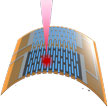 In order to realize practical device applications of stretchable strain sensors, stability without sacrificing sensitivity, stretchability, and scalability is crucial. To that end, researchers report a kirigami-structured graphene-polymer hybrid nanocomposite for strain sensors by a laser direct writing technique on a polyimide sheet. The approach of laser direct writing not only contributes to the conversion of polyimide material into conductively porous carbonized film, but also gives rise to the formation of kirigami-shaped structures with highly stretchable capability in a fast and efficient manner.
In order to realize practical device applications of stretchable strain sensors, stability without sacrificing sensitivity, stretchability, and scalability is crucial. To that end, researchers report a kirigami-structured graphene-polymer hybrid nanocomposite for strain sensors by a laser direct writing technique on a polyimide sheet. The approach of laser direct writing not only contributes to the conversion of polyimide material into conductively porous carbonized film, but also gives rise to the formation of kirigami-shaped structures with highly stretchable capability in a fast and efficient manner.
Mar 23rd, 2021
 Liquid crystal materials are ubiquitous in everyday life. Recently, a new way to create advanced liquid crystal materials by merging nanotechnology and liquid crystals was discovered: by adding nanoscale objects to liquid crystals, new materials with superior physical properties can be created. However, this raises an important question: How do nanoparticles affect ionic processes in liquid crystals? Here is an overview of recent advances in the understanding of ionic phenomena in liquid crystals doped with nanomaterials.
Liquid crystal materials are ubiquitous in everyday life. Recently, a new way to create advanced liquid crystal materials by merging nanotechnology and liquid crystals was discovered: by adding nanoscale objects to liquid crystals, new materials with superior physical properties can be created. However, this raises an important question: How do nanoparticles affect ionic processes in liquid crystals? Here is an overview of recent advances in the understanding of ionic phenomena in liquid crystals doped with nanomaterials.
Mar 18th, 2021
 Individual single-walled carbon nanotubes (SWCNTs) have thermal conductivity that is several times higher than copper. However, once researchers start to assemble SWCNTs into macroscale composites, fibers or films, they notice that thermal conduction drops significantly. Employing in situ transmission electron microscopy, researchers visualized a colossal anisotropy of thermal conductivity of nanoscale materials. The team says that their methodology to visualize nanoscale thermal transport is not limited to carbon nanotubes.
Individual single-walled carbon nanotubes (SWCNTs) have thermal conductivity that is several times higher than copper. However, once researchers start to assemble SWCNTs into macroscale composites, fibers or films, they notice that thermal conduction drops significantly. Employing in situ transmission electron microscopy, researchers visualized a colossal anisotropy of thermal conductivity of nanoscale materials. The team says that their methodology to visualize nanoscale thermal transport is not limited to carbon nanotubes.
 Subscribe to our Nanotechnology Spotlight feed
Subscribe to our Nanotechnology Spotlight feed





